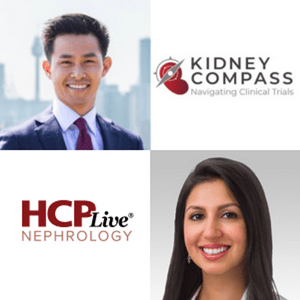Key Updates in IgA Nephropathy at ERA 2025, with Chee Kay Cheung, MBChB, PhD
In this special edition of Kidney Compass, Shikha Wadhwani sits down with Chee Kay Cheung, MBChB, PhD, of the University of Leicester, on the floor at the 62nd European Renal Association (ERA 2025) Congress to reflect on how far IgA nephropathy (IgAN) treatment has come—from what used to feel like “tumbleweeds” in nephrology to a pipeline packed with promising therapies.
At the top of the conversation: the rise of B-cell modulating therapies targeting APRIL and BAFF. Cheung highlights the interim results from the global phase 3 VISIONARY trial of sibeprenlimab, an APRIL inhibitor that achieved a 51.2% placebo-adjusted reduction in proteinuria at 9 months—the largest seen in any IgAN phase 3 study to date. Safety data were encouraging, with low discontinuation rates and a favorable overall profile.
Also on the radar: new long-term data from zigakibart, another anti-APRIL antibody, and promising topline results from atacicept, which targets both APRIL and BAFF. While head-to-head comparisons remain elusive, future eGFR outcomes and biomarker studies may help tailor treatment choices to individual patients.
The discussion then shifts to recently approved agents. A post-hoc analysis of the NefIgArd trial found that oral budesonide’s efficacy was consistent across a range of baseline eGFR values. Cheung also spotlights the PROTECT trial’s open-label extension, where patients switching from maximally dosed irbesartan to sparsentan still saw proteinuria reductions of approximately 40%, reinforcing the added value of endothelin receptor antagonism.
During the conversation, Cheung also previews upcoming biopsy-based data from the SPARTAN study, which will explore how sparsentan impacts intrarenal inflammation and fibrosis. With innovation accelerating across drug classes, mechanisms, and biomarker strategies, this year’s ERA meeting evidences that nephrology, but more specifically the IgAN treatment landscape, has moved far beyond tumbleweeds—and into a new era of precision and promise.
Relevant disclosures for Wadhwani include Boehringer Ingelheim, Calliditas Therapeutics, GSK, Otsuka Pharmaceutical Co., Travere Therapeutics, and others. Relevant disclosures for Cheung include Travere Therapeutics, Alexion, Alpine Immune Sciences, Calliditas Therapeutics, CSL Vifor, Novartis, Otsuka Pharmaceutical, Roche, Vera Therapeutics, and others.
References:
Perkovic V. Sibeprenlimab for Patients With IgA Nephropathy: Results From a Prespecified Interim Analysis of the Phase 3 VISIONARY Study. Presented at: 62nd European Renal Association Congress. June 04 – 07, 2025. Vienna, Austria.
Barratt J, Lee E.Y., Kim S.G., et al. Sustained Long-Term Efficacy and Safety of Zigakibart Over 100 Weeks in Patients with IgA Nephropathy. Presented at: 62nd European Renal Association Congress. June 04 – 07, 2025. Vienna, Austria.
Vera Therapeutics. Vera Therapeutics Announces Atacicept Achieved 46% Proteinuria Reduction in ORIGIN Phase 3 Trial in Adults with IgA Nephropathy. Vera Therapeutics. Published June 2, 2025. Accessed June 5, 2025. https://ir.veratx.com/news-releases/news-release-details/vera-therapeutics-announces-atacicept-achieved-46-proteinuria
Barratt J, Lafayette R, Reich HN, et al. Nefecon provides kidney benefit irrespective of baseline eGFR in patients with IgAN: a subanalysis of the NefIgArd study. Presented at: 62nd European Renal Association Congress. June 04 – 07, 2025. Vienna, Austria.
Floege J, Risk DV, Preciado P, et al. Effects of Sparsentan After Maximized Angiotensin Receptor Blocker (ARB) Treatment in Patients With IgA Nephropathy (IgAN) in the PROTECT Trial. Presented at: 62nd European Renal Association Congress. June 04 – 07, 2025. Vienna, Austria.

